Summary
This project took place within the Inclusive Design and Thoughtful Technology squad (ID&TT) of the Technical University Eindhoven (TU/e), focusing on supporting teenagers’ nutritional intake to reduce the risks for cardiac diseases. Children with chronic diseases have a higher chance of developing cardiac issues when growing up due to a multitude of factors, such as insufficient movement and sensitivity to unhealthy diets. And therefore, together with the Wageningen University (WUR), University Medical Center Utrecht (UMCU), and TU/e, a project was initiated to research and develop a solution.
ChefPrep is an app that supports teenagers in building healthy habits around dealing with breakfast and lunch in a fun and encouraging way. The adolescence period is the stage in life in which individuals begin to develop autonomy, fundamental in the development of longer-term eating habits that may be reflected in adulthood. The app encourages the user to discover, plan, communicate and improve! ChefPrep contains many recipes for breakfast and lunch -specially selected for a heart-healthy diet and a teenage lifestyle- which enable the user to discover new and healthy recipes to make and bring to school. The concept and prototype were developed with a highly theoretical and user-centered design approach, involving vast quantities of experts, stakeholders, and partners. Methods used to develop the concept are based on the double diamond and the Spiral SDLC Model. With the help of persuasive design, elements were designed for the app to encourage healthy habit building. ChefPrep offers families a framework to support and build healthy habits so that in the end, life can be enjoyed to the fullest.
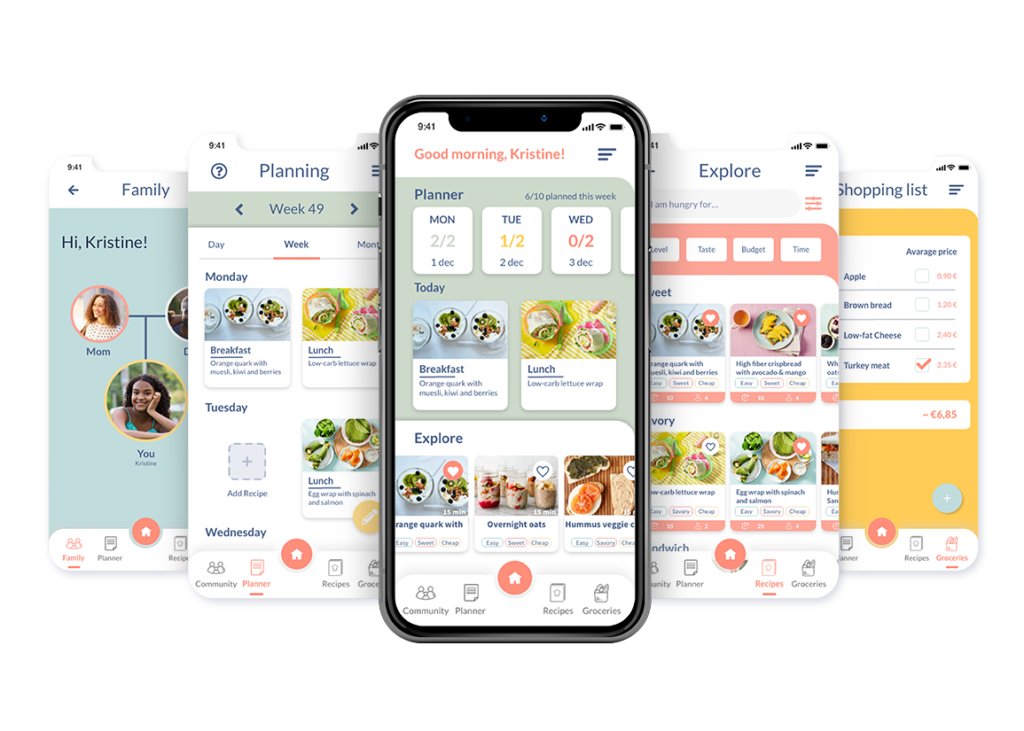
Click here to check out the app!
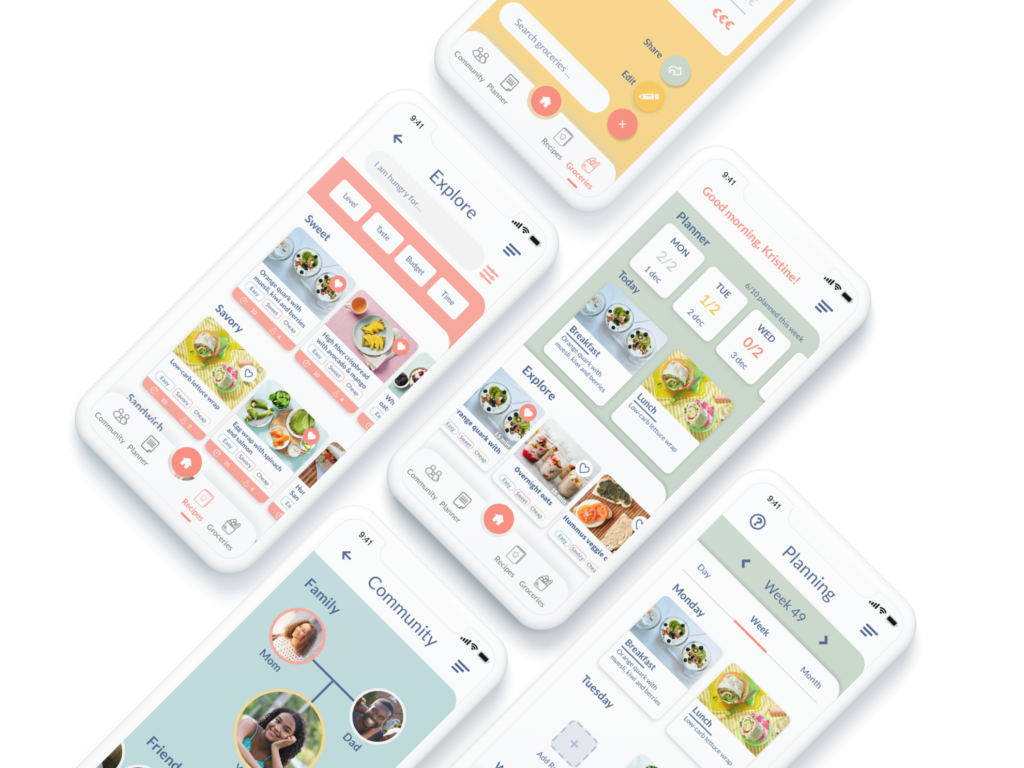
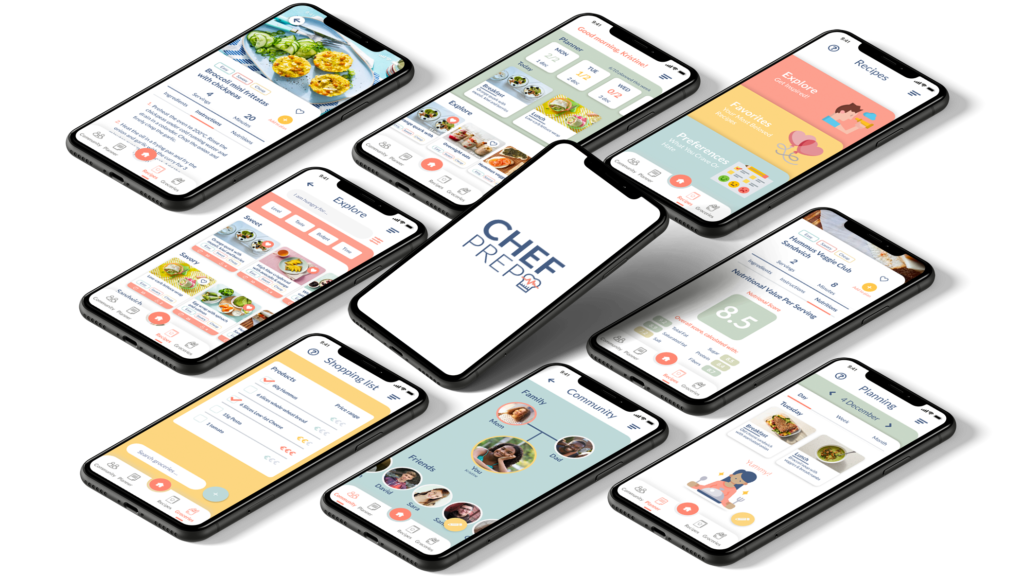
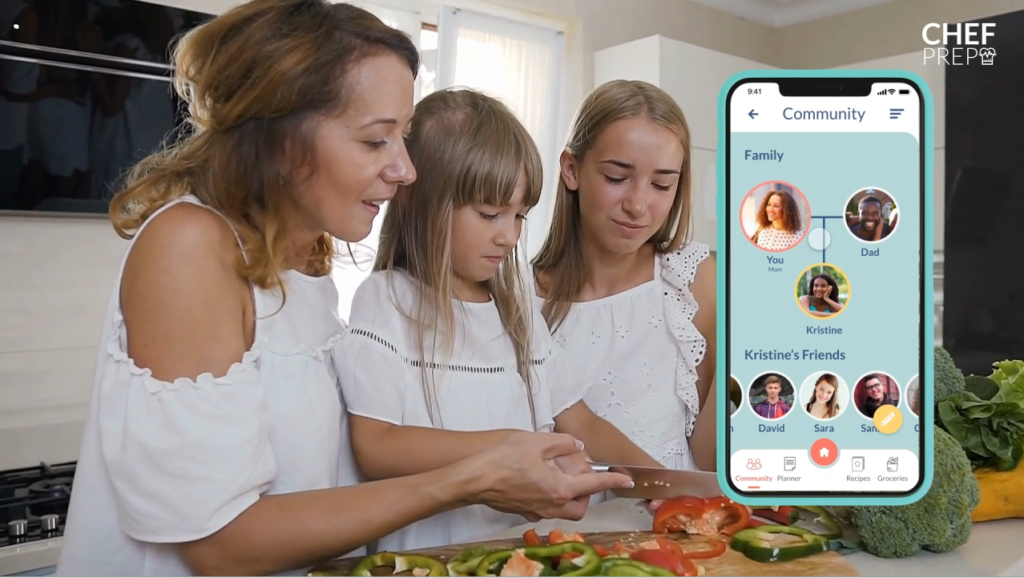
Partners
This project is part of the multidisciplinary alliance initiative between the TU/e, University Medical Center Utrecht (UMCU), and Wageningen University & Research (WUR). The alliance partners aspire to realize personalized cardiovascular risk assessment and prevention in children with chronic disease in the next decade. The alliance seed funds provide a unique impetus to develop our multidisciplinary research program and apply for ZonMw and EU funding in 2022. The TU/e experts aim to develop innovative mobile tools, in close collaboration with the WUR and UMCU alliance partners.
Alliance:
– The University of Technology Eindhoven
– University Medical Center Utrecht
– Wageningen University & Research
WUR and UMCU alliance partners:
– Dr. Henk Schipper (UMCU)
– Dr. Sanne Nijhof (UMCU)
– Dr. Trudy Voortman (WUR)
– PhD(c) Desiree Lucassen (WUR)
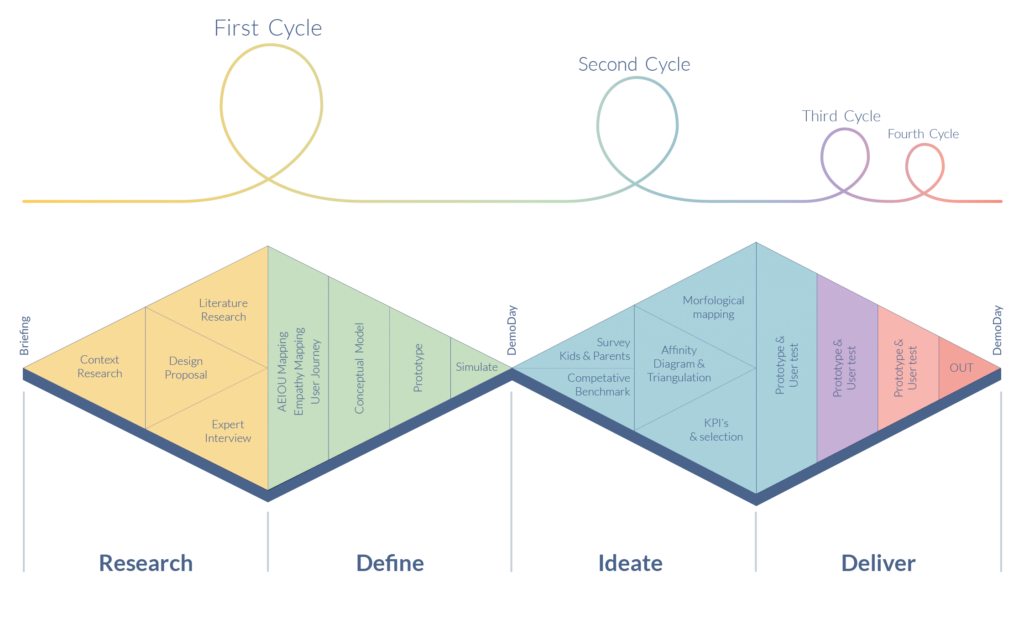
Procces
The composition of the team and nature of the project impacted the shaping of the approach. For the approach two methodologies where considered, the double diamond as described by the British Design Council in 2005 (Design Council, 2019) and the Spiral SDLC Model (Tutorial points, n.d.)
The considerations are based on the linear nature of the Double diamond model -which might not be fitting for the highly iterative process of software development- as well as the limited time available for this project, which could be compromised due by a highly iterative approach without clear boundaries. The process was shaped with a ‘best of both worlds’ mentality, where the structure of the double diamond method is used to support the highly iterative process common in software development.
As shown in the procces image, the project started with researching the context of the brief. These insights were then comprised in a design proposal. The topic was then further explored by expert interviews and literature reviews. Then the insights were gathered and mapped utilizing an AEIOU and empathy mapping which resulted in a user journey and a conceptual model. These then were translated into an early prototype to present during the demo-day, which functioned as a peer review.
Based on the feedback received, the scope was refined. A retrospective survey for 18–23-year-olds and a comparable survey for parents was then initiated to gather more insights. Meanwhile a competitive benchmark was performed. Our next step was grouping all insights in an affinity diagram and synthesizing them, resulting in a triangulated overview. Compressing this overview into an information architecture allowed us to perform a targeted ideation session generating wireframes with the morphological chart (Moultrie, n.d.) method. It also allowed us to determine the Key Performance Indicators (KPI’s) used to select functions. (Hanington et al., 2021) These KPI’s also functioned as a framework for setting up user testing.
Prototyping the selected wireframes resulted in an app with three main functions presented in low-fidelity prototypes. Preliminary testing with some students revealed many valuable insights. Based on these insights the functionality of the app was revised. Parallel to this another competitive benchmark was executed, the results were captured in style mood boards. These gave rise to 5 style directions that were used in a desirability test to support the eventual selected style. Both revisions and style implications were both combined in a high-fidelity prototype, which was used to create a looks like real experience for final testing. The process of this project was finalized by performing two different tests. One was a continuation of the previous KPI based test to assess the usability of the app with 18 to 23-year-olds. The second test was performed with parents of the target group, this test focussed on the viability and expected impact on behaviour change. The results of this test were analysed and are the foundation of the recommendations in chapter 13.
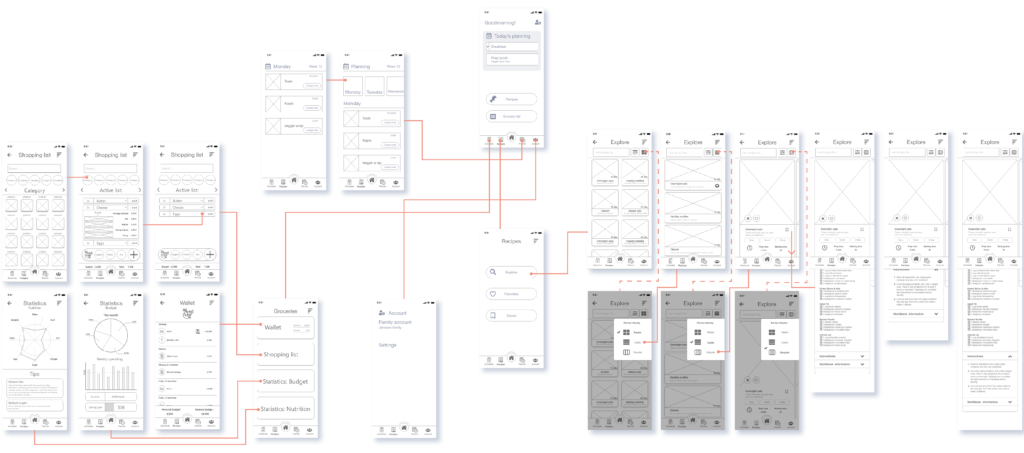
Conclusion
To support children with chronic heart disease in their habits around the nutritional intake, a project has been carried out for the alliance project. The project focused on the target group of children aged 12 to 18 with chronic diseases. These children are more likely to develop heart problems as they mature into adults. We learned that children are prone to unhealthy eating behaviour, as habits are formed during the teenage years. Therefore, we expect that supporting healthy habits will positively impact their lifestyle for the long term.
We refined the scope of this project to: how to encourage proper preparation of breakfast and lunch during a school day to prevent unhealthy behaviour? This was further explored and underlined by experts and literature. Due to maturing, brain development, sensitivity for rewards, strive for independence, and influences of adolescents’ environment, we believe that creating self-management and autonomy are the most significant factors in their learning curve. ChefPrep was created to balance all these factors and help and encourage adolescents to build healthy habits around breakfast and lunch. It allows teens to plan meals, learn new recipes, and encourages communication with friends and family.
ChefPrep has three main functionalities: the food planner, recipes, and groceries. There are seven different categories (home or landings page, community, food, progress, financial, profile, and motivational factors) that combined support these three main functions. All these categories support the growth curve of teens.
The food planner provides a place where meals can be efficiently planned. The food planner provides a tool where meals can be efficiently planned. As a result, the user gets familiar with planning their meals beforehand and is learning this healthy eating habit. Moreover, it encourages adolescents not only to eat healthily, but also to break the unhealthy habit of throwing away food and buying unhealthy lunches during the school day. By searching for tasty recipes and saving them as favourites, preferences can be passed on. The recipes feature includes different indicators to learn what healthy eating is without understanding complex numbers. On a scale from one to ten, the nutritional specifications are indicated and understandable. This is also the case for groceries, where euro signs indicate the average prices. In the grocery list, ingredients can easily be added from the recipes. In this way, communication between parent and child is accessible, and make sure that everything needed will be at home, regardless of who does the shopping. The community channel in the app allows the teens to share their favourite recipes and browse family and friends’ favourites. For the parents, there is a parent mode that helps parents find a balance to support their children by setting goals, but it also helps to let go and not be overprotective. It allows parents to give positive feedback to their teens and prevent their children to negatively associate rewards with food. Working together towards building healthy eating habits allows teens to grow and become independent.
ChefPrep is thus an app that supports teenagers in building healthy habits with breakfast and lunch in a fun and encouraging way. It enables teenagers to plan meals, learn new recipes, and encourages communication with friends and family. Besides that, it also allows the parent to track development and low-key monitoring without compromising on the fun elements of food preparation, which eases the transition towards autonomy and selfdependence reducing the risk of developing unhealthy eating habits.
In short, ChefPrep helps prepare the chefs of tomorrow!